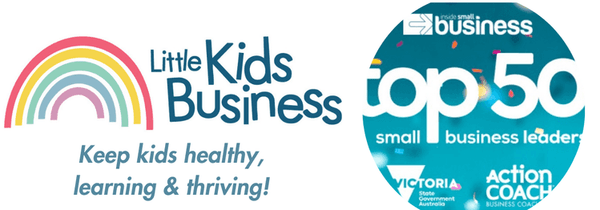Being a single parent has taught me many things, but one of the most valuable lessons I've learnt is the art of budgeting. Every dollar counts, especially when you're trying to provide the best for your child. But here's the thing: providing the best doesn't always mean the most expensive. Over the years, I've discovered that the joy a toy brings isn't always tied to its price tag.
The Value of Play
Before we talk about budgeting, let’s not forget why we buy toys in the first place. Play is a crucial part of your children’s development. It's through play that they learn about the world, develop motor skills, and foster creativity. But here's a secret: kids don't need the latest, most expensive toys to reap these benefits.
I remember a time when my daughter was fascinated by a simple cardboard box. She turned it into a spaceship, a house, and even a slide. That box, which cost me nothing, provided her with hours of imaginative play. It was a stark reminder that children often find joy in the simplest things.
Set a Realistic Toy Budget
As a single mum, I’ve learnt that having a single mum budget is one of the most important things I can do. Budgeting for single toys is a bit like budgeting for groceries. You need to set aside a specific amount and stick to it. But how do you determine what that amount should be? Here are a few steps I follow:
Review Your Overall Budget: Before allocating money for toys, ensure all essential expenses like rent, utilities, and groceries are covered.
Set a Monthly Limit: Decide on a fixed amount you're comfortable spending on toys each month. This can be as little as $10 or as much as $50, depending on your financial situation.
Save for Special Occasions: Birthdays and holidays are times when you might want to splurge a little. Consider setting aside a separate fund for these occasions.
Remember, it's not about how much you spend, but how wisely you spend. Quality should always take precedence over quantity. It's better to invest in one durable toy that will last for years than several that will break in a few months.
Prioritise Needs Over Wants
This is perhaps the trickiest part of toy shopping. With so many options out there, how do you decide what to buy? The key is to differentiate between needs and wants.
Developmental toys, like building blocks or puzzles, are needs. They play a direct role in your child's cognitive and motor skill development. On the other hand, the latest action figure or doll, while fun, might be more of a want.
Last year my son wanted the new Iron Man action figure. At the same time, I noticed he was showing interest in puzzles. With my budget in mind, I had to make a choice. I opted for a set of puzzles. While he was initially disappointed, a smile soon emerged when he completed each puzzle. It was a proud moment for both of us, and it taught him the value of patience and perseverance.
When faced with these decisions, involve your little kids. Let them understand the reasoning behind your choices. It's a great way to teach them about prioritising and making informed decisions.
Take Advantage of Sales and Discounts
Who doesn't love a good toy sale? With a little planning, you can snag some fantastic deals on toys. Here's how:
Plan Ahead: If you know your kids’ birthdays are coming up or a particular holiday, start scouting for sales well in advance.
Sign Up for Newsletters: Many toy stores offer exclusive discounts to newsletter subscribers. It's a great way to stay updated on upcoming sales.
Use Cashback Apps: There are several apps that offer cashback on purchases. It might not seem like much, but it adds up over time.
One of my most memorable shopping experiences was during a Black Friday sale. I managed to get a beautiful wooden kitchen set for my daughter at half the price. The look on her face when she saw it was worth all the effort!
Embrace Second-Hand Toys
There's a certain charm in second-hand toys. Not only are they budget-friendly, but they also come with a history. Some of my kids’ favourite toys are ones we've picked up from thrift and second-hand stores or online marketplaces.
But before you dive into the world of second-hand toys, here are a few tips:
Check for Safety: Ensure the toy doesn't have any broken parts or small pieces that could be a choking hazard.
Clean Thoroughly: Before handing over a second-hand toy to your child, give it a good clean. Warm soapy water usually does the trick for most toys.
Research the Toy: Sometimes, you might come across a toy you're unfamiliar with. A quick online search can give you an idea of its original price and reviews.
One of my proudest finds was a vintage wooden train set. It was in excellent condition and cost me a fraction of its original price. My son loves it, and it's become a cherished part of our playtime.
DIY and Homemade Toys
One of the most rewarding experiences as a parent has been crafting toys at home with my kids. Not only is it budget-friendly, but it also offers a unique bonding opportunity. Plus, there's an unparalleled joy in seeing your child play with something you've created together.
Here are a few simple DIY toy ideas:
Sock Puppets: All you need are some old socks, buttons for eyes, and a bit of yarn for hair. Let your child's imagination run wild as they create characters and stories.
Homemade Playdough: With just flour, salt, water, and food colouring, you can whip up a batch of playdough that's just as good as the store-bought kind.
Cardboard Castles: Those old cardboard boxes can be transformed into magnificent castles or forts with a little paint and creativity.
I remember crafting a simple fishing game with my daughter. We used paper clips as fish, attached them to a string, and used a magnet as the fishing rod. The joy on her face as she "caught" each fish was priceless.
Toy Libraries and Swaps
If you haven't heard of toy libraries, you're in for a treat! Much like a regular library, toy libraries allow you to borrow toys for a specific period. It's a fantastic way to provide your kids with a variety of toys without cluttering your home or emptying your wallet.
Here's how to make the most of toy libraries:
Research Local Options: Check if there's a toy library in your suburb. Many community centres or local groups run them.
Understand the Rules: Each toy library will have its own set of rules regarding borrowing periods, care of toys, and returns. Make sure you're familiar with them.
Engage with the Community: Toy libraries often host events or play sessions. It's a great way to meet other parents and let your child socialise.
Toy swaps are another excellent option. Organise a swap event in your community where parents can exchange toys. It's a win-win for everyone involved!
Budget-friendly toy shopping isn't just about saving money; it's about making memories, teaching valuable lessons, and understanding the true essence of play. Whether you're crafting a toy at home, hunting for a second-hand gem, or teaching your child about money, remember that the joy of play is priceless.
In my experience as a single parent, I've learned that it's not the price tag that matters, but the love and thought behind each toy. So, the next time you're faced with the task of toy shopping on a budget, take a deep breath, trust your instincts, and know that you're doing an incredible job.
Guest Post Written by: Amber Aldridge
|
|
Amber Aldridge is a Lead Writer at MoneyMaver and a background as a teacher, adeptly shares practical advice that benefits families striving to manage their finances, covering personal finance, budgeting, and debt management - drawing real-life experiences from being a single mom of 2 kids. Amber passionately champions the cause of individuals who feel excluded or overlooked in the present-day economy and deeply supports those who face challenges in today’s economic landscape. |



